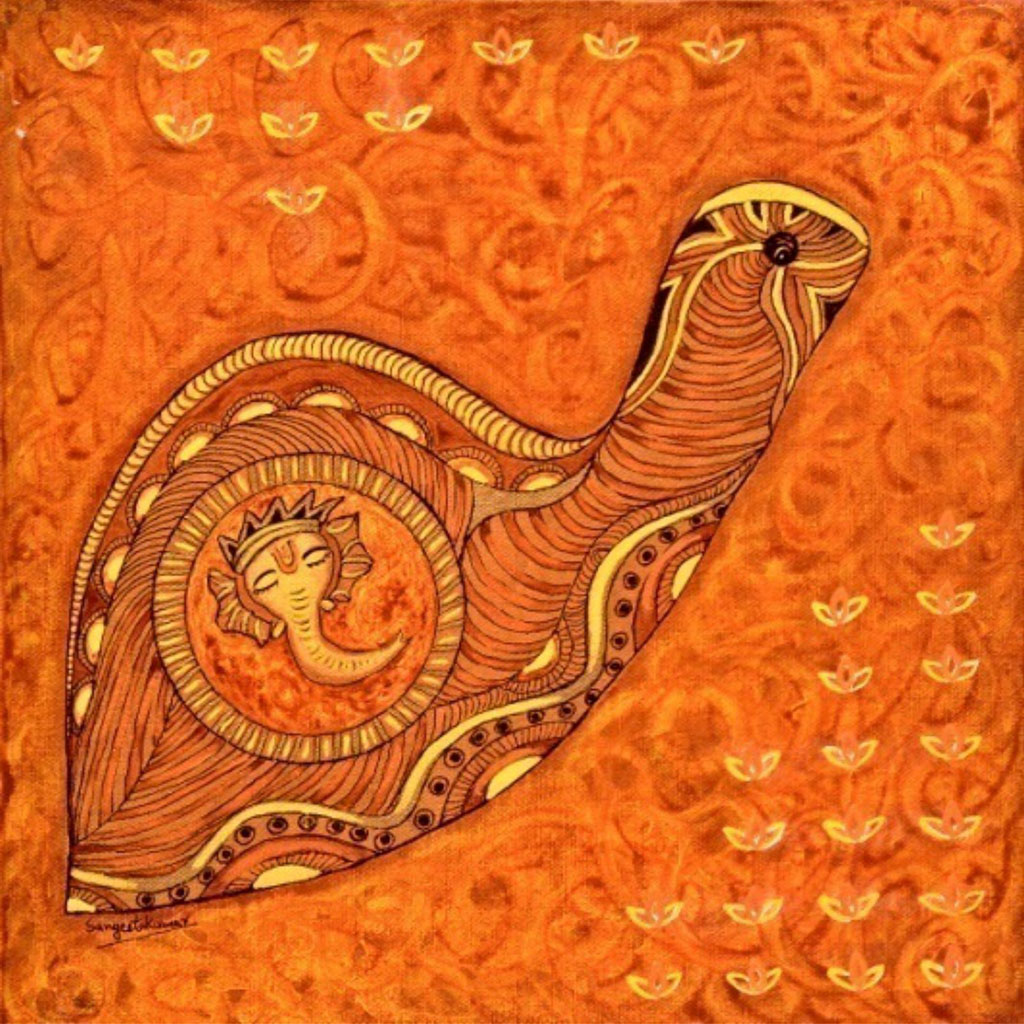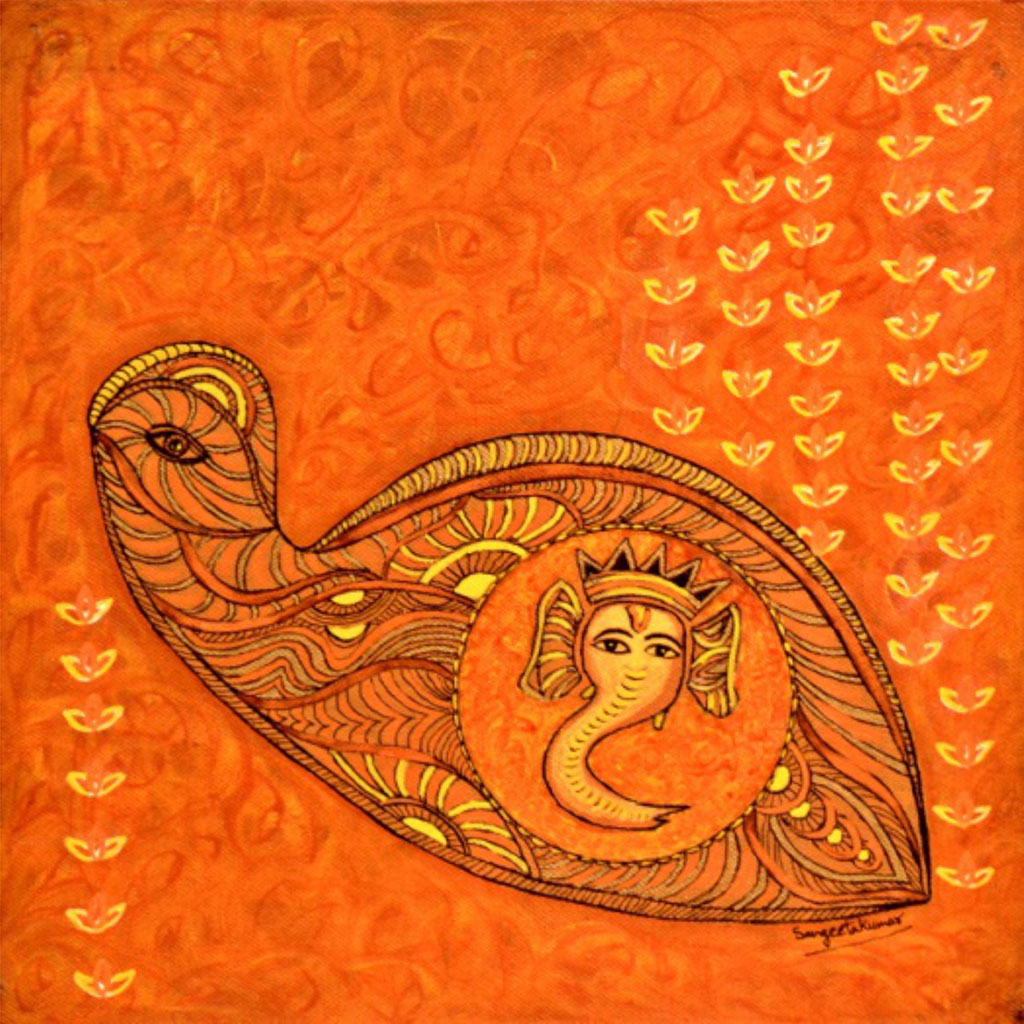The painting here represents the faith in Lord Ganesha of the tortoise. The painting background is textured and the strokes are curvaceous, devoid of linear representation. In the center of the tortoise is Ganesha, who is known for giving powerful blessings in any form; he helps to release all negativity, attracts positive energy, and enables one’s attention to follow the path of true spirituality. By worshipping Ganesha, all the obstacles can be removed as it brings success in all facets of life, and promises vitality and a new beginning. Ganesha is the harbinger of energy, healing both body and environment, cleansing the Chakras, and releasing the negative energy. Additionally, looking at Jain depictions of Ganesha, the tortoise is one of his Vahan amongst others including mouse, elephant, ram, or peacock.
The tortoise in this painting is depicted as meditating, it cocoons itself in its shell, like when a yogi meditates and he cocoons himself from the world too and gets inside his meditative shell. A tortoise has mythological relevance as well as religious; it is often placed at the entrance of the temple, which signifies that we need to detach ourselves from the materialistic world while entering the temple. Another remarkable learning is that when a tortoise lays eggs, it has an unusual way of hatching them. The female tortoise does not sit on top of them to hatch them but focuses its attention by continually looking at them. The energy from its eyes hatches the eggs. This inspires a spiritual aspirant to concentrate his entire attention one-pointedly towards the Almighty. Also, the importance of ‘Darshan’, focusing ones attention on the image or the idol, is explained by the symbolic use of a tortoise in the temple.

